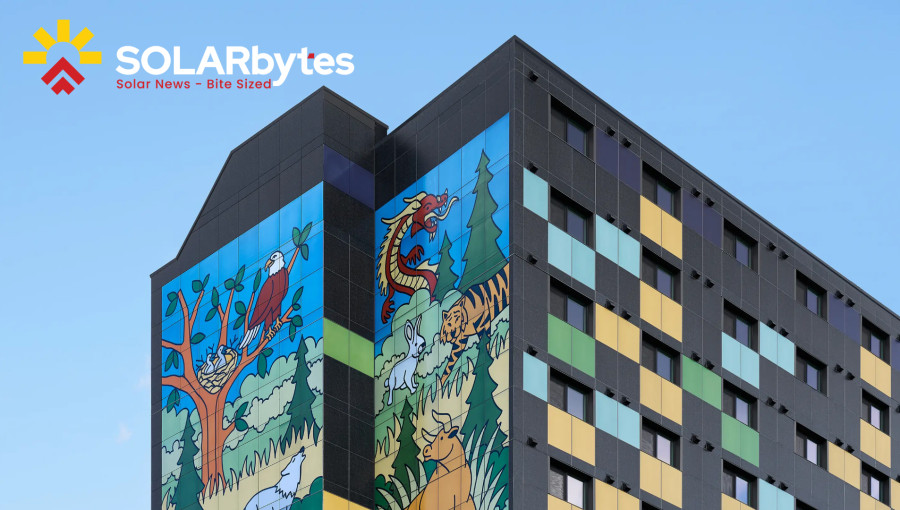An apartment building in Edmonton, Canada, has set a new world record by transforming its facade into the largest solar panel mural. The innovative project on the 12-story SunRise Building integrates art and renewable energy, covering 34,500 square feet (approximately 3,205 square meters) with custom-coloured photovoltaic panels. This functional artwork not only generates clean electricity for the residents but also prevents 150 tons of carbon emissions annually, showcasing a powerful new model for sustainable urban development that combines aesthetic appeal with significant environmental benefits.
The landmark project was part of a major retrofit of a residential tower originally constructed in the 1970s. Instead of pursuing demolition, the building’s owner, Avenue Living, partnered with technology firm Mitrex to install building-integrated photovoltaic (BIPV) panels. These panels serve a dual purpose, replacing conventional siding to generate 267 kilowatts of electricity while also providing essential weather protection with an aluminum honeycomb core and continuous insulation, a crucial feature for Edmonton’s harsh winters. The initiative was scaled up to meet the criteria for Canada’s Deep Retrofit Accelerator Initiative, which required at least a 50% reduction in emissions.
A central feature of the installation is a striking 85-foot (approximately 26-meter) mural on the building’s northern wall titled “The Land We Share.” Designed by Indigenous artist Lance Cardinal, the piece pays tribute to the historical contributions of the First Nations and Chinese communities in the region by blending their cultural symbols. The rest of the building’s exterior is covered in a colourful mosaic of dark grey, purple, orange, yellow, blue, green, and red panels, turning a standard renovation into a celebrated piece of public art.
The retrofit offers substantial financial and environmental advantages. It is projected to save the building’s owners and residents approximately $80,000 per year after the fifth year of operation, with a return on investment estimated at just four years when compared to the cost of traditional siding. The 150-ton annual reduction in CO2 emissions is equivalent to removing about 32 gasoline-powered cars from the road each year. The project demonstrates that even in northern latitudes with long winters, solar energy can be an economically and environmentally sound solution.
The SunRise Building serves as a blueprint for how cities can reimagine existing infrastructure. Millions of square feet of building surfaces worldwide could be similarly retrofitted, converting passive walls into active energy generators. This approach not only produces clean power but also helps mitigate urban heat islands by shading buildings and reflecting sunlight. By embedding culturally significant artwork into its design, the project proves that climate solutions can be visible, beautiful, and deeply connected to community identity, paving the way for a more sustainable and inspiring urban future.

